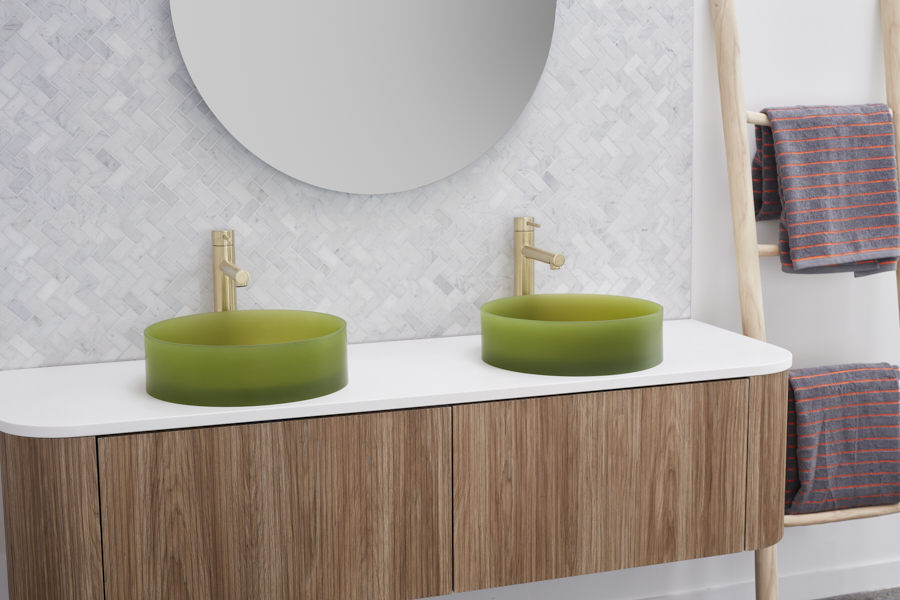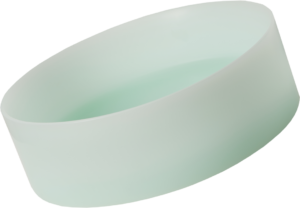Choosing the best basin for your bathroom is a crucial decision. The type of basin material you pick will have a differing effect on:
- beauty and customisation
- durability and longevity
- sustainability and environmental impact
- cost and maintenance
Ceramic basins, traditionally and generically have long been a staple for homeowners seeking an established material suitable for those with a tight budget. Resin basins, only recently introduced into the bathware industry hold the potential for being one of the best-performing basins, with a distinctive look and many benefits such as the ability to withstand environments with harsh conditions like yachting, seaside developments and high-stress commercial properties.
Gaining knowledge about the key distinctions between resin and ceramic basins can come in handy when deciding the right type of basin for your bathroom or powder room.
Resin Basins
Made from a high-density, customisable composition, resin basins fulfil both ends of the spectrum. They are exceptionally functional because of their robustness and durability, and their distinctively transparent appearance brings out an unmatched aesthetic appeal that is hard to resist.
The type of resin used in basin manufacturing will have differing properties. The choice of resin used for a basin will influence the colour, look, sustainability, and durability. Oxyform™ resin, developed and used exclusively by The Basin Lab will be used as the leading example because it has an unrivalled durability surpassing other resins and it’s minimal environmental impact due to the composition containing no toxic carcinogens and the production of Oxyform™ basins being completely oxygen-cured.
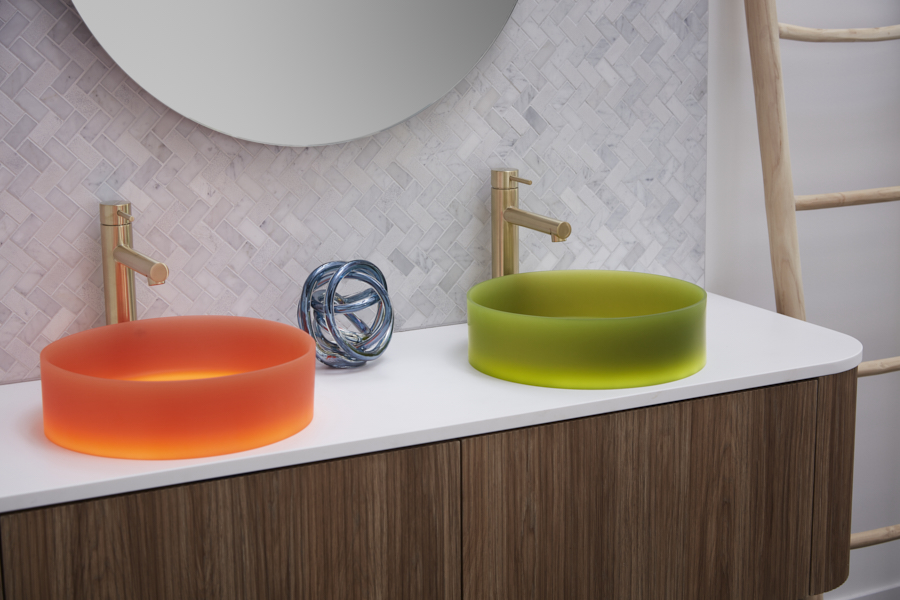
Ceramic Basins
A well-known choice in bathware, ceramic basins are easy to mass-produce at a low cost. Ceramic is made with a mixture of clays and fillers combined and fused to create a shape.
The composition and manufacturing process for ceramic basins has remained relatively unchanged over the years, retaining its old-fashioned methods.
To create a ceramic basin, a clay and water mixture is poured into a mould to shape it. The newly shaped basin is then dried to remove any excess moisture. Next, the basin is coated with a glaze as ceramic is very fragile and susceptible, requiring surface protection. Finally, the glazed basin is fired in an oven at extremely hot temperatures, typically around 1200 degrees Celsius, to solidify it.
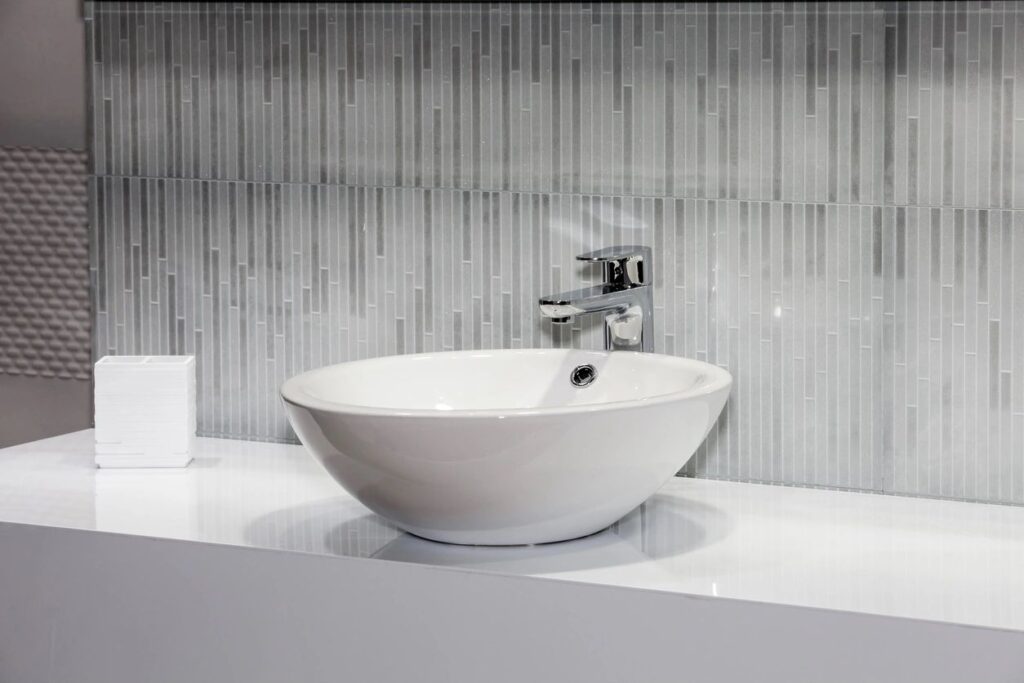
Resin Vs. Ceramic Basins: Pros and Cons
Beauty & Customisation
Unlike resin basins, ceramic lacks customisation for colours and finishes. Resin basin manufacturers like The Basin Lab have Custom Colouring, where you can personalise your basin to any colour in the spectrum. You can choose a basin that perfectly matches your bathroom decor, creating a cohesive look that matches your desired atmosphere. With this new reach in bathware innovation, you can transform your space, setting a new standard for in-trend, distinctive bathrooms.
The Basin Lab offers a lighting accessory called the iLLUMi™ Lightbox for their Oxyform™ basins. This accessory illuminates the basin with a soft glow, adding a captivating and calming dimension of light. The designer colours and finishes become even more radiant with their Lightbox. Not only does it look stunning, but it also creates a relaxing and renewing vibe to your bathroom space.
With the addition of a movement sensor, your basin and mirror can seamlessly become a nightlight by walking into your bathroom.
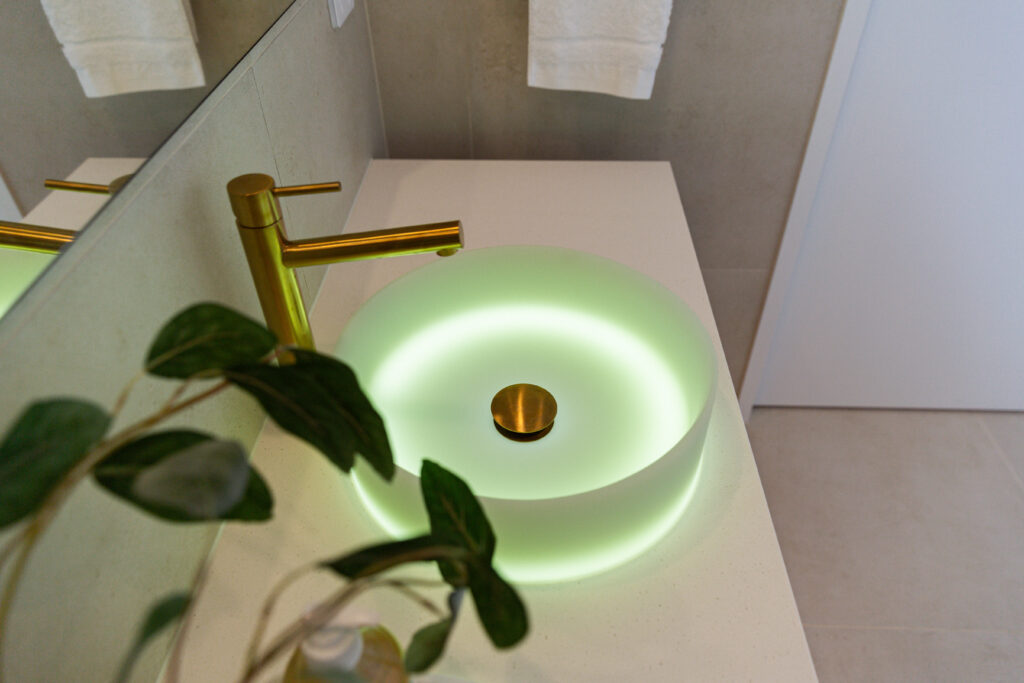
Durability & Longevity
While ceramic basins have existed and been commonly used for a long time, they are highly vulnerable to damage from other items. Even the drop of a ring or careless handling of objects can result in chips and cracks.
The surface of ceramic basins is also prone to scratches, which can happen from abrasive materials and even seemingly harmless kitchenware like plastic bowls. Heavy or coarse kitchenware, such as pots and pans, can lead to scratches, chips, and cracks, ultimately ruining the pristine surface of the basin.
Additionally, the glaze on ceramic basins can craze or wear down over time, leading to a less resistant surface and a dull or discoloured appearance that detracts from its aesthetic appeal.
Resin basins have an innate durability that can withstand hard impacts with ease. Oxyform™ resin basins are renowned for their exceptional strength and unbreakable nature. The Basin Lab backs this up with a 10-year warranty, giving you the peace of mind that your resin basin can last a lifetime.
Sustainability & Environmental Impact
The carbon dioxide emissions per resin basin are significantly lower than those of the ceramic alternative. This is because ceramics are baked in commercial ovens at temperatures over 1000 degrees, wasting a significant amount of energy and resources. On the other hand, Oxyform™ resin is entirely oxygen-cured, using minimal energy and no ovens, making it a more sustainable option. In comparison to ceramic sinks, Oxyform™ basins have considerably lower CO2 emissions and use fewer resources.
Cost & Maintenance
Resin basins, like Oxyform™, are perfect for those who want high-end luxury bathware and are willing to spend a little extra for something durable that won’t require repairs or replacements.
On the other hand, ceramic basins are cheaper because they usually have a hollow interior, which makes them more prone to cracking and chipping. Repairing these damages is virtually impossible.
Ceramics are much heavier than resin basins like Oxyform™, which can be an issue when it comes to mounting and installation, possibly requiring you to spend more to add strength to your vanity or bathroom. While ceramic basins are easy to mass-produce and can be at a cheap cost, they require careful handling to prevent breakage.
Both resin and ceramic basins are easy to clean, only requiring soapy water and a sponge or microfiber cloth. Although ceramic basins can easily stain and require constant cleaning to prevent stains.
Conclusion
In conclusion, choosing between resin and ceramic basins boils down to a trade-off between price and quality. While ceramic basins offer a cheap option suited for those with a tighter budget, resin basins like Oxyform™ resin used by The Basin Lab provide unmatched customisation, durability, and sustainability. And the iLLUMi™ Lightbox brings a sense of calm and serenity to your bathroom space. Resin basins, with their lower environmental impact and low maintenance, present a compelling choice for those seeking long-lasting luxury bathware.
